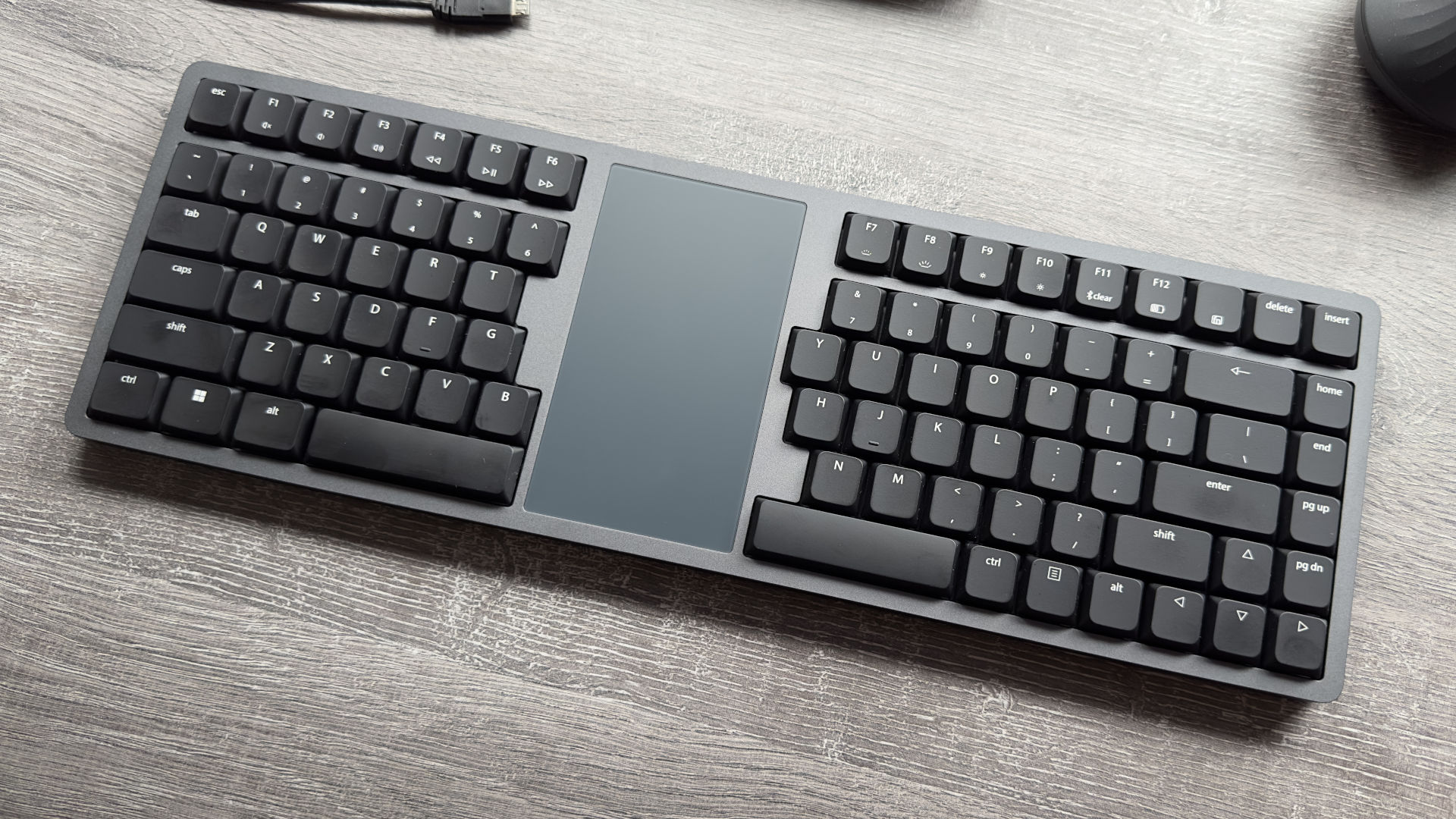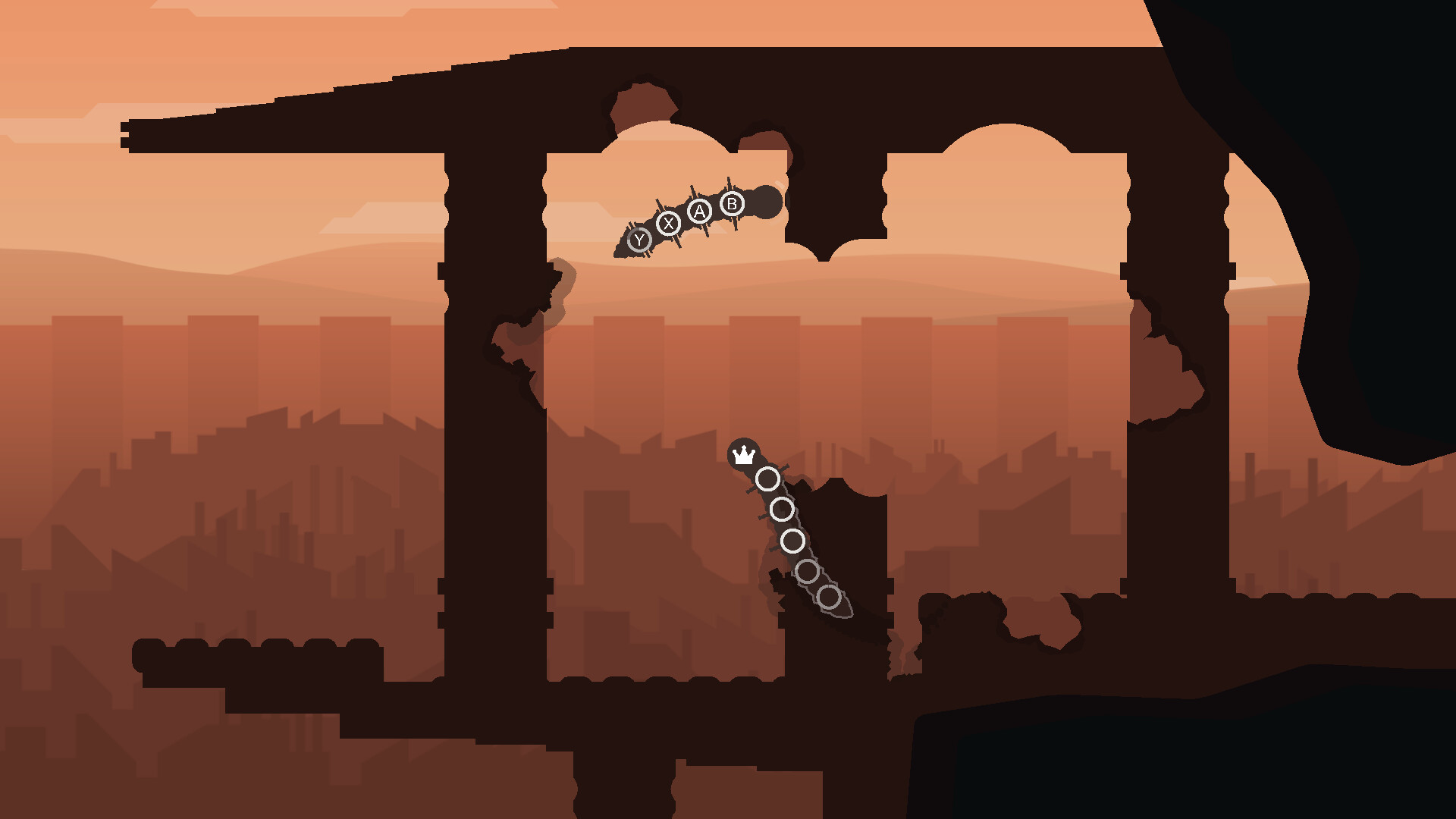
Take a low-profile, wireless mechanical keyboard, split the keys in two and stick a touchpad between them. Now you've got a Kinesis Form.
If you browse through the usual online retailers, you’ll find no end of keyboards with built-in touchpads, so for Kinesis (makers of the superb Freestyle Edge RGB) to enter that particular market, you’d naturally expect them to have something special. And at $199, the Kinesis Form does need to be special.
At first glance, it certainly stands out from the usual crowd of all-in-one keyboards. The chassis comprises two pieces of milled aluminium and it uses low profile, low force Gateron mechanical switches. The keys are split into two groups, providing a degree of ergonomic comfort for your shoulders, and there’s a so-called Windows Precision touchpad nestled between them. There’s even switchable white LED backlighting and a dual-profile Bluetooth connection.
Let’s break all of that down, starting with the body. Eschewing the norm of using ABS plastics for the body, Kinesis has gone with CNC-machined aluminium and it’s extremely robust. That does make it a little on the heavier side of things but at just 2 lbs (just under 1 kg), you’re not really going to notice. It certainly makes it easy to just jam the whole thing in a bag, if you need to work on the go.
(Image credit: Future)
Switch type: Gateron KS-33 Red
Keycaps: ABS
Lighting: White backlighting, dimmable
Onboard storage: None
Extra ports: None
Connection type: Bluetooth LE, wired USB
Cable: USB Type-C/USB Type-A, detachable
Weight: 0.91 kg / 2.0 lbs
Price: $199
The downside to this approach is that the flat, low-profile format means there’s no scope for any tenting, something that’s a must for my daily use keyboards. That’s a real shame because tenting is typically a strength of Kinesis. Perhaps if the Form is a success, the next iteration could have it.
I’d also like to see some means to provide a modicum of tilting. The Form is about as low-profile as you’re going to get with a mechanical keyboard so it’s not like your wrists are going to be overly extended while sitting at a desk. But if you prefer working at a standing desk, then it’s less than ideal.
It is, though, a delight to type on. The Gateron KS-33 Red switches only require 50 g of actuating force but they offer 3.2 mm of travel, so the feedback is really quite positive. The switches are very quiet, too, with just the merest of clicks.
I’m not a big fan of the keycaps but it’s an entirely subjective thing. The ABS material is somewhat of a grease-magnet and the matt black colour really shows where one’s sticky fingers have been. Although Kinesis doesn’t plan to offer any upgrades for the caps, plenty of keycap sets for traditional mechanical keyboards will fit and work with the low-profile switches.
The star of the show is, of course, the touchpad. At 2.5 x 4.5 inches (63.5 x 114.3 mm), it’s a fair size but I feel that it would be better if it was a tad wider, even by just 10 mm or so. The portrait orientation makes it a breeze to scroll through webpages and documents, though the relatively narrow width means doing any broad mouse sweeps across the desktop becomes a little tricky at times.
(Image credit: Future)
(Image credit: Future)
(Image credit: Future)
With a Windows 10/11 PC, one gets the full gamut of finger control and gestures, and hooking it up to my Asus ROG Ally showcased a perfect use for the Form—using a handheld PC for something more than just gaming. The vertical nature of the touchpad does, however, restrict how useful it is in games—it wasn’t too bad in Baldur’s Gate 3, for example, but playing any first or third-person shooter wasn’t nice at all.
Part of the reason for that is there is no button mechanism underneath the pad. Mouse ‘clicks’ are done purely through touch (one finger for left mouse button, two fingers for right) and there’s no haptic feedback to back up the registering of pressing the pad. Outside of gaming, it’s not really an issue and I suspect the low profile of the chassis put constraints on what kind of touchpad Kinesis could use.
The same is true of the portrait layout—the touchpad could have been placed at either end of the keyboard but then the design would be far less compact (it’s 16 inches / 406 mm wide) and would waste all that space between the keys.
(Image credit: Future)
When it comes to connecting the Form to a device (be it a computer, console, tablet, or even a TV), you’ve got one of two choices: low-energy Bluetooth for wireless freedom or the lengthy USB Type-C/Type-A cable included in the box. The former can be flipped between two profiles, using a small switch on the rear of the chassis, and it’s very quick—hopping between the ROG Ally and another PC was a cinch.
✅ You want the quiet mechanical life: Those Gateron Red switches are a delight to use, replete with feedback and sport the merest of clicks.
✅ You need to travel a lot: It’s a hefty thing but that solid build quality means you can jam it in a bag and head out any time.
❌ You want full ergo: With no tenting or tilting options, the Form is only partially ergonomic.
❌ You plan to game a lot with it: The touchpad is as good as they come but the portrait orientation makes it frustrating to use in games.
Not every device supports gesture recognition, though, so depending on what machine you connect the Form to, you’ll have either full control via the touchpad or a fairly limited mouse action. That’s something out of Kinesis’ hands, so one can hardly criticise the Form for this.
I’m glad Kinesis kept the backlighting to a subtle white LED affair, rather than offering the usual RGB malarky to appease the gaming crowd. It’s perhaps a little too subtle but it’s enough to use the keyboard in a darkened room. The lights do eat into the battery life (Kinesis claims two to three months without the lights, one to two weeks with it on) but stab the right keys a few times, and you can dim them right down, as well as completely disable them.
So, what to make of the Kinesis Form? I’ve been using it daily for a while now, as a ‘normal’ keyboard and for some different scenarios, such as streaming my PC to a bedroom TV and controlling it while lying back. If it had tenting, I’d be using it non-stop, it’s that nice to type on but the flat format doesn’t agree with my ancient and somewhat ruined wrists.
(Image credit: Future)
It’s obviously a niche-use keyboard and I don’t mean that in any kind of negative way, but it does go some way to explaining the rather high price. At $199, the Form is touching on boutique keyboard territory and since all such items tend to be low-volume sellers, Kinesis can’t rely on mass production techniques to bring the cost down.
It could have used a fully plastic chassis but then it would have lost a lot of its sturdiness, and been no different than the mountains of other all-in-one keyboards that one can buy these days. CNC-milled aluminium isn’t cheap but its use in the Form lends it an air of quality.
The Kinesis Form is one of those keyboards that if you think is right for you, then you’ll probably love it. For me, I think I’ll wait for the Form 2 (Kinesis tells me it’s already thinking ahead for the next one) and if that has tenting, or the option to buy a tented chassis, and it has a touchpad with haptic feedback, then I’ll be first in line to try it.






